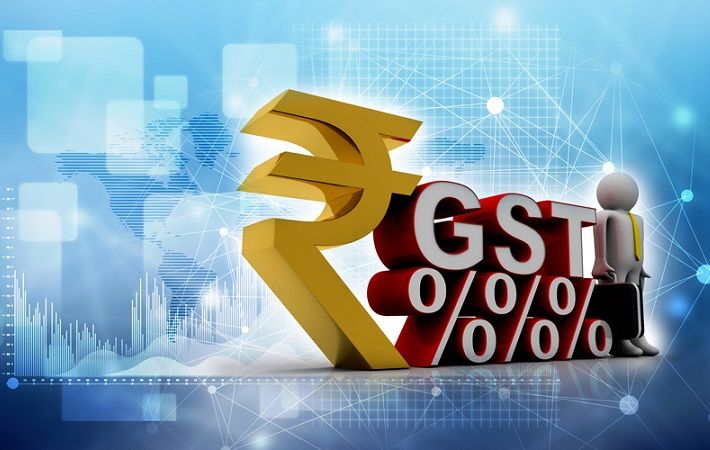GST-related issues need redressal despite tax regime's benefits

As the goods and services tax (GST) regime completes its fourth year today, there are still issues that bog several industrial sectors in India. The tax regime did benefit the textile, garment and footwear sectors in a variety of ways, but issues that need redressal include those related to GST slabs, an inverted duty structure and challenging GST norms.
There is a government proposal to change four GST slabs into three and footwear industry associations have demanded reduction in GST rates on footwear to 12 per cent.
GST reduced input costs of the garment industry by subsuming complicated taxes like octroi and entry tax into a uniform tax system. Excise and value-added tax (VAT), which differed from state to state, earlier applied to yarn and branded garments and that added to the input cost. With GST, input costs were reduced.
Different agencies managed various kinds of indirect taxes earlier. GST reduced compliance burden. There is a demand that all indirect taxes must be brought under GST so that exporters only need to claim a refund of the input taxes paid, making the system more efficient than separate reimbursement schemes.
According to Apparel Export Promotion Council (AEPC) chairman A Sakthivel, though the GST regime initially posed a lot of problems due to lack of clarity and understanding of the procedures and compliance requirements and technical glitches, over time it has been having the intended effect of streaming payments, reducing multiplicity in taxes, easing out documentation and compliance requirement and better record keeping. It has also encouraged integration of manufacturing activities in the units, he told Fibre2Fashion.
The government had proposed to reduce GST slabs from the current 5 per cent, 12 per cent, 18 per cent, and 28 per cent, to three slabs—8 per cent, 18 per cent and 28 per cent. But a decision regarding that seems to have been postponed. Man-made fabric (MMF) now attracts 5 per cent GST, which the government was earlier considering to raise to 6 per cent or 12 per cent. The proposal faced strong opposition from industrialists.
In February this year, the Southern Gujarat Chamber of Commerce and Industry (SGCCI) opposed the government’s proposal to change the slabs, saying that would have a negative impact on the textile sector.
The continuous rise in import of MMF, especially after GST was implemented, was deeply hurting the domestic textile sector, the Confederation of Indian Textile Industry (CITI) lamented in late 2019. Analysis by CITI showed the primary reason was the removal of countervailing duty after GST was implemented, which overnight made imports cheaper by more than 12 per cent.
The production of polyester fabric in the country’s largest MMF hub Surat decreased by 40 per cent after GST was imposed in 2016. An SGCCI report in August 2019 said the higher cost of raw material, including yarn, was posing a major challenge to the MMF sector.
Import duty on fabrics and garments was subsequently increased by the government to control imports, and therefore, the import of fabrics has been relatively under control, but import of garments could not be controlled through this measure because of free trade agreements.
According to Indian Texpreneurs Federation (ITF) convener Prabhu Dhamodharan, a single GST structure at the lowest slab for the entire value chain for cotton helped in a big way and improved overall efficiency and compliance at multiple levels.
“Rationalisation of duties at the MMF value chain is a long-pending reform and we are confident that such rationalisation will improve the competitiveness of the sector. MMF being a growth engine for the textile and apparel sector, we need to address this on a priority basis,” Dhamodharan told Fibre2Fashion.
The textile processing industry is suffering from an inverted duty structure as their output GST is low (5 per cent) while that on raw material and service inputs, GST is 18 per cent, said Suresh Manoharan, secretary of the State Industries Promotion Corporation of Tamil Nadu (SIPCOT) Textile Processors Association in Perundurai. “Processing units are not able to fully utilise GST input tax and their input tax credit (ITC) ledger is getting accumulated, leading to cash flow issues,” he explained.
Processing units cannot get ITC refund as the GST law does not allow refund of service inputs, said Manoharan, suggesting amendments to allow the same and raising output GST to 12 per cent.
“The inverted tax structure blocks the working capital for businesses due to input tax credit accumulation. Hence, the resolution of inverted duty structure in the textile value chain is an area that needs attention,” AEPC’s Sakthivel said.
Sakthivel said another concern is the lack of clarity on applicability of rebate restriction with regard to procurements made under advance authorisation after payment of integrated GST (IGST). If a company has taken one advance authorisation license and taken the benefit of IGST exemption, even on one import transaction, which may not even constitute 1 per cent of total transactions, such units are completely barred to export goods under the IGST paid route. He has already taken up this issue with the chairman of the Central Board of Indirect Taxes and Customs and the GST policy wing of the department of revenue.
Textile processors in Tiruppur some time back appealed to all political parties to bring down GST for processing due to steep hike in prices of raw materials in recent months. The Clothing Manufacturers Association of India (CMAI) urged the government last December to reduce GST on all readymade garments to 5 per cent from 12 per cent and retain the same on all types of cotton yarn, synthetic yarn, fabrics and made-ups.
The issue of inverted duty structure—raw materials attracting taxes higher than finished products—is a major issue in sectors like footwear and textile, which government officials believe affects producers with little benefit to consumers. It also makes domestic industry less competitive against imports.
In case of textiles too, officials reportedly have examined tax rate amendments required to correct anomalies. The idea is to limit the 5 per cent tax to fewer items in this sector.
A recent brief survey carried out on textile units in Tamil Nadu, Uttar Pradesh, Haryana and Gujarat by the Small Industries Development Bank of India (SIDBI) revealed that the sector also faces several operational roadblocks at the ground level, including challenging GST norms.
The SIDBI survey found that ongoing changes in the GST portal and filing of returns has created confusion for units, with exporters stating that getting integrated GST refunds is a major challenge.
The input credit chain affected the unorganised sector in the textile industry. Any textile industry start-up needs investment in value-added services like marketing, warehouse rentals, logistics, courier and other product fulfilment costs, and all these attract a GST of 18 per cent. This is also considered by many as a major impediment.
The fitment committee of the GST Council, which recommends rate changes, has proposed increasing the rate on footwear (less than ₹1,000), readymade garments and fabrics to 12 per cent from 5 per cent now. More expensive footwear items are taxed now at 18 per cent. For inputs like MMF and yarn, the panel has proposed reducing the rate to 12 per cent from 18 per cent to correct the distortion. The GST Council last met on May 28 after seven months—its 43rd meeting.
Footwear manufacturers were said to absorb the 18 per cent GST in a manner not to cause a sudden rise in product prices, which further reduced profit margins for small manufacturers. Although the government allowed input credit, the benefit did not translate into much saving for the highly labour-intensive footwear industry.
The footwear industry has been requesting the government to consider reducing the GST rates on all footwear priced above ₹1,000 to 12 per cent to allow the industry to continue growing and be able to improve its position in the global market.
According to Puran Dawar, president of Agra Footwear Manufacturers and Exporters Association, the issue of fake invoicing needs to be addressed and a rating of suppliers should be posted on the GST portal. Since July 2017, footwear businesses are struggling to receive GST refund in case of export through courier as many courier companies do not adhere to all export documentation, he told Fibre2Fashion, calling for separate procedures for online and courier-based exports.
Though many industry groups have demanded a single GST rate for the entire polyester industry chain, Federation of Gujarat Weavers Welfare Association (FOGWA) president Ashok Jirawala feels such a decision will adversely affect the polyester business in the country. At present, GST rate is 18 per cent on purified terephthalic acid (PTA) and monoethylene glycol (MEG), 12 per cent on polyester yarn and 5 per cent on greige fabrics. The pending issue of lapsed GST credit of weavers also needs to be addressed, he told Fibre2Fashion.
While Dawar suggested mandatory inclusion of all taxes in the sale price of a product to avoid billing fraud, Jirawala recommended offering GST registration to only genuine businessmen after stringent verification to prevent fraudsters from benefitting.
Given the large number of unregistered units associated with the apparel value chain, the incidence of mismatches in GSTR-2A is high, AEPC’s Sakthivel said. GSTR-2A is a purchase-related dynamic tax return automatically generated for each business by the GST portal. Although a 20 per cent deviation in books versus GSTR-2A is allowed, that still leads to substantial blockage of refunds, he said.
Sakthivel, who backs the idea of 5 per cent GST across the entire value chain, said a uniform rate will protect the industry from inverted duty and reduce the blocked ITC refunds.
Two options exist now for exporters for taking the ITC refund on goods export. First, the exporter can export under a letter of undertaking or LUT (without payment of tax) and claim the refund of unutilised ITC. Second, the exporter can export on payment of IGST (without LUT) and claim its refund. The Finance Act, 2021, has proposed that IGST refunds (without LUT) will now be restricted to a class of persons, goods or services, but no notifications have been issued so far regarding that class.
Sakthivel said he has requested authorities to allow both options of taking the refunds for apparel exporters as the IGST route is simpler and faster and reduces blockage of funds.
Fibre2Fashion News Desk (WE-DS)
































-Ltd..jpg?tr=w-120,h-60,c-at_max,cm-pad_resize,bg-ffffff)





.jpg?tr=w-120,h-60,c-at_max,cm-pad_resize,bg-ffffff)
.jpg?tr=w-120,h-60,c-at_max,cm-pad_resize,bg-ffffff)






